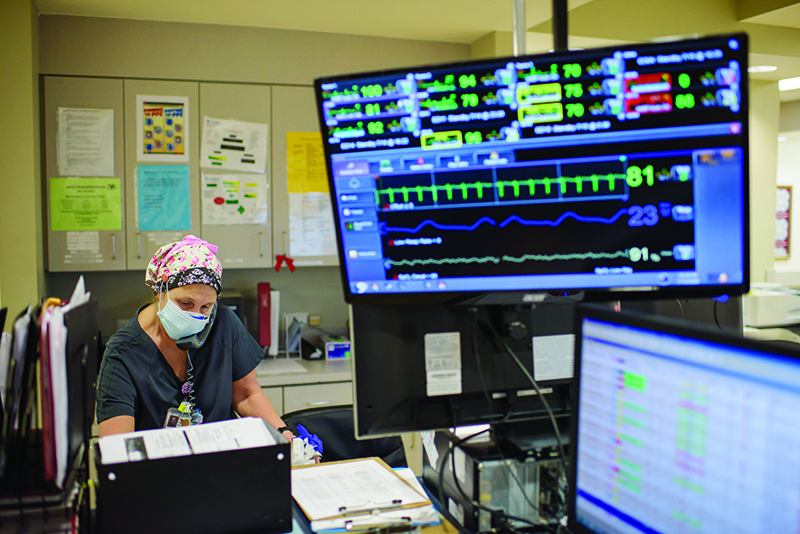
RICHMOND: Bed-ridden patients are treated in the congested corridors of the Oakbend Medical Center, a small hospital in Texas where a rapid increase in coronavirus cases threatens to overwhelm staff. Emergency cases are normally guaranteed immediate care at the hospital outside Houston but, with a limited capacity of 16 beds in the ward, the influx of COVID-19 victims has forced it to use ingenuity to cope.
“Right now, under the COVID crisis, unfortunately we’re having to hold patients 24, 48 hours... until a bed space opens up,” Bill Hamlyn, director of emergency critical care, told AFP.
Houston has emerged as a national hotspot of infections in recent weeks as the United States flounders in its efforts to control the virus and case numbers rocket to record highs.
Wearing a hairnet, two masks-one on top of the other-and sometimes a plastic visor, the caregivers busily administer first aid to newly admitted patients in the corridors. Near a bed placed against a wall, an ultraviolet lamp sterilizes the air. A nurse in a blue protective gown pulls on a second pair of gloves before moving one patient out of the “COVID holding room,” whose door is made of white tarpaulin sealed with zippers.
On Wednesday, four of the 16 beds in the Oakbend Medical Center’s emergency unit, located on the ground floor of the building, were for COVID-19 patients. The hospital has also started a home oxygen service for patients whose condition is stable, with support provided by daily videoconferencing to a “COVID buddy” health professional.
“This is one of the ways we try to keep patients out of the hospital and maximize our space,” said Hamlyn. Since the first peak of the outbreak in the spring, hospitals across the US have reported being overwhelmed. Often, this is because the extra intake of coronavirus patients, even if it has been relatively small, has taken up all their spare capacity.
People needing treatment for the virus have become much younger since the start of the summer holidays, said Donna Jameson, ER clinical coordinator. She predicted that the July 4th holiday would soon further increase the number of young people suffering as the long weekend of partying and social gatherings spread the virus.
Out of more than 26,000 patients whose cases have been analyzed by Texas health authorities, nearly 5,000 were between 20 and 29 years old. Upstairs at the hospital, the small intensive care unit dealt with 12 patients-five of them with COVID-19. “Now many of the patients that come, they come in, like, severe respiratory distress,” said Niticia Mpanga, a registered respiratory therapist at the hospital. Since July 1, the number of detected cases in Texas has increased by about 70 percent, and health officials fear the easing of shutdown restrictions could be disastrous. The entire Houston area should again be put under lockdown for at least 10 days, said one emergency doctor who wished to remain anonymous. “That gives us time for some of these people to recover and go home,” the doctor said, criticizing the political response, adding, “We need better leadership.” — AFP
The Houston metropolitan area has more than 6.5 million inhabitants and on Wednesday only 79 beds were free in intensive care units.
Texas was one of the first US states to reopen its economy.
But just few weeks later, the Republican governor, Greg Abbott, was forced to close all bars again and he recently ordered masks be worn in all public places.
“If everyone can adopt the practice of wearing a face mask for the next four weeks, we will be able to get COVID-19 under control,” he told local TV on Wednesday. -AFP

